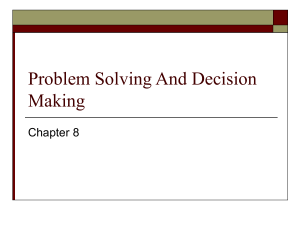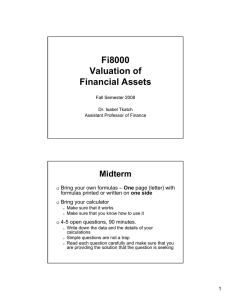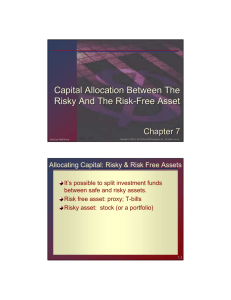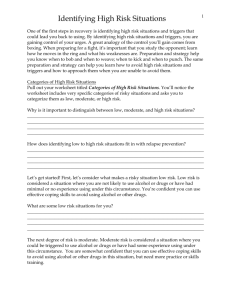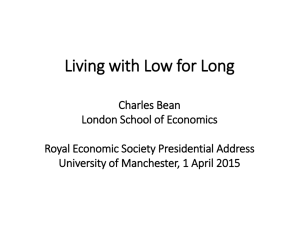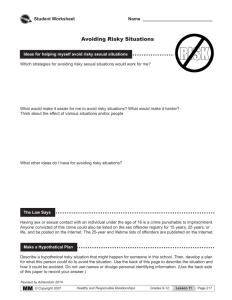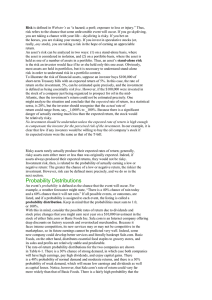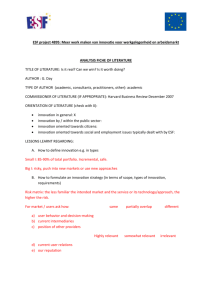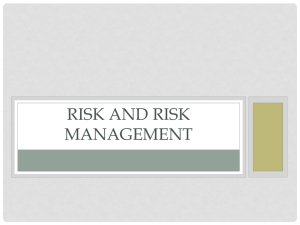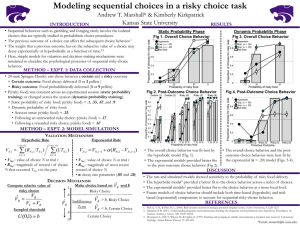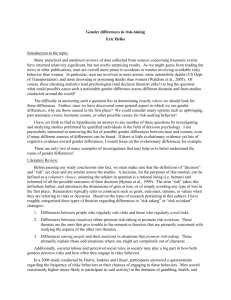High-Risk Situations Worksheet: Addiction Recovery
advertisement
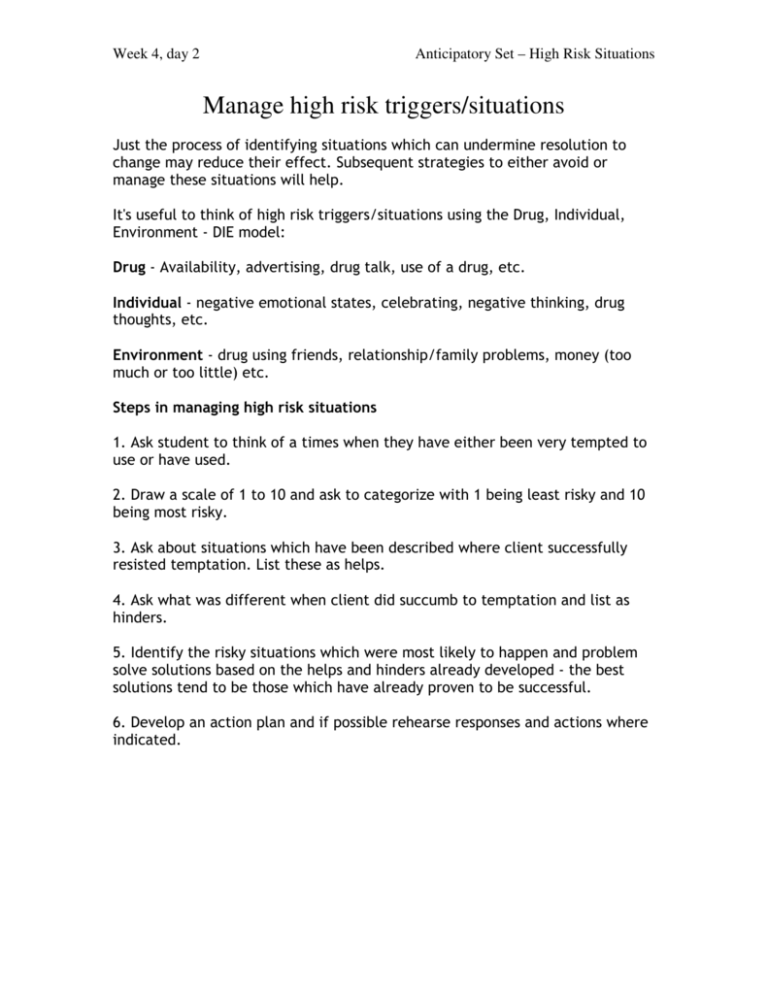
Week 4, day 2 Anticipatory Set – High Risk Situations Manage high risk triggers/situations Just the process of identifying situations which can undermine resolution to change may reduce their effect. Subsequent strategies to either avoid or manage these situations will help. It's useful to think of high risk triggers/situations using the Drug, Individual, Environment - DIE model: Drug - Availability, advertising, drug talk, use of a drug, etc. Individual - negative emotional states, celebrating, negative thinking, drug thoughts, etc. Environment - drug using friends, relationship/family problems, money (too much or too little) etc. Steps in managing high risk situations 1. Ask student to think of a times when they have either been very tempted to use or have used. 2. Draw a scale of 1 to 10 and ask to categorize with 1 being least risky and 10 being most risky. 3. Ask about situations which have been described where client successfully resisted temptation. List these as helps. 4. Ask what was different when client did succumb to temptation and list as hinders. 5. Identify the risky situations which were most likely to happen and problem solve solutions based on the helps and hinders already developed - the best solutions tend to be those which have already proven to be successful. 6. Develop an action plan and if possible rehearse responses and actions where indicated. Week 4, day 2 Anticipatory Set – High Risk Situations Student Worksheet High- Risk Situations On the scale below, 1 being lowest and 10 being highest, rate each of the high-risk relapse situations. 1 Least risky 2 3 4 5 Rather Risky 6 7 8 9 10 Very Risky Week 4, day 2 Anticipatory Set – High Risk Situations Situations A. Attending a social gathering where alcohol is being served. B. Hanging out with old friends. C. Wanting to celebrate a success. D. Feeling lonely, bored, angry, guilty, helpless, or anxious and dwelling on past mistakes. . E. Using marijuana, alcohol, sleeping pills, tranquilizers, or any other mood altering drug. F. Having positive feelings that in the past were associated with getting high. G. Severe stress at home or on the job. H. Exhaustion of fatigue. I. Doubting you have a problem and believing you can safely return to controlled use. J. Romanticizing the “good times” while using. K. Continuing other addictive behaviors such as compulsive gambling, sexuality, eating or working. HELPS: HINDERS:
